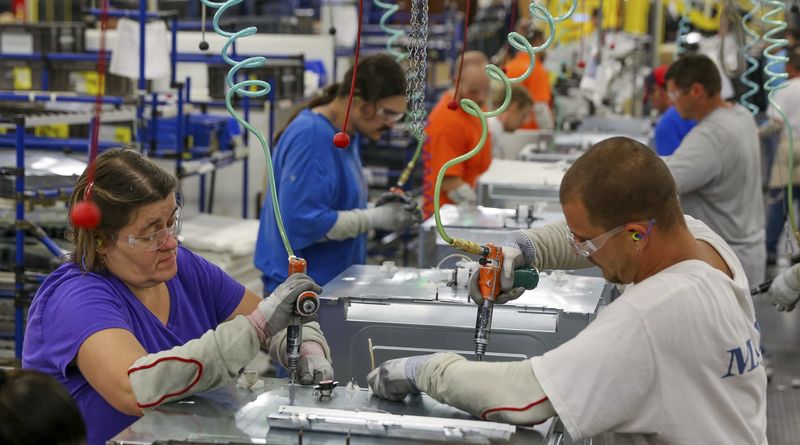By Lucia Mutikani
WASHINGTON (Reuters) - New orders for U.S. factory goods fell in February and business spending on capital goods was much weaker than initially thought, the latest indications that economic growth slowed further in the first quarter.
The Commerce Department said on Monday new orders for manufactured goods declined 1.7 percent as demand fell broadly, reversing January's downwardly revised 1.2 percent increase. Orders have declined in 14 of the last 19 months. They were previously reported to have increased 1.6 percent in January.
The department also said orders for non-defense capital goods excluding aircraft fell by a steeper 2.5 percent in February instead of the 1.8 percent drop reported last month. These so-called core capital goods are seen as a measure of business confidence and spending plans.
"This morning's report suggests a more sluggish manufacturing sector in the early part of the quarter," said Jesse Hurwitz, an economist at Barclays (LON:BARC) in New York.
The report added to weak consumer spending and trade data in suggesting economic growth moderated further at the turn of the year after slowing to a 1.4 percent annualized pace in the fourth quarter. Estimates for first-quarter gross domestic product growth are currently below a 1 percent rate.
U.S. government bond prices were little changed after the data, while the dollar fell to a two-week low against the yen. U.S. stocks were trading marginally lower.
Manufacturing, which accounts for about 12 percent of the economy, has been pressured by a strong dollar and weak global demand, which have undermined exports of factory goods, as well as efforts by businesses to reduce an inventory overhang.
The sector has also been slammed by investment cuts by energy firms as they adjust to reduced profits from cheaper oil.
MANUFACTURING STABILIZING
But the worst of the factory slump appears to be over, with a survey last week showing manufacturing activity expanded in March for the first time in six months.
After gaining about 20 percent versus the currencies of the United States' main trading partners between June 2014 and December 2015, the greenback is flat on a trade-weighted basis so far this year. In addition, the slide in oil prices has slowed.
"We remain hopeful for some upcoming improvement in the data as many of these headwinds have either passed or faded," said Daniel Silver, an economist at JPMorgan (NYSE:JPM) in New York.
"We have also been encouraged somewhat by some other more timely manufacturing indicators that have turned more mixed lately following a period of more widespread and severe weakness."
In February, factory orders fell broadly, with orders for transportation equipment tumbling 6.2 percent. Orders for machinery dropped 3.4 percent and bookings for electrical equipment, appliances and components decreased 3.6 percent.
The Commerce Department also said shipments of core capital goods, which are used to calculate business equipment spending in the GDP report, fell 1.7 percent in February rather than the 1.1 percent reported last month.
Inventories of factory goods dropped for an eighth straight month, suggesting factories were making progress in reducing the inventory glut. While that could support future manufacturing production, it suggests inventories remained a drag on economic growth in the first quarter.

The inventories-to-shipments ratio was 1.37 in February, unchanged from the prior month. Unfilled orders at factories fell 0.3 percent in February, while shipments of manufactured goods, which have declined in 10 of the last 11 months, fell 0.7 percent.
